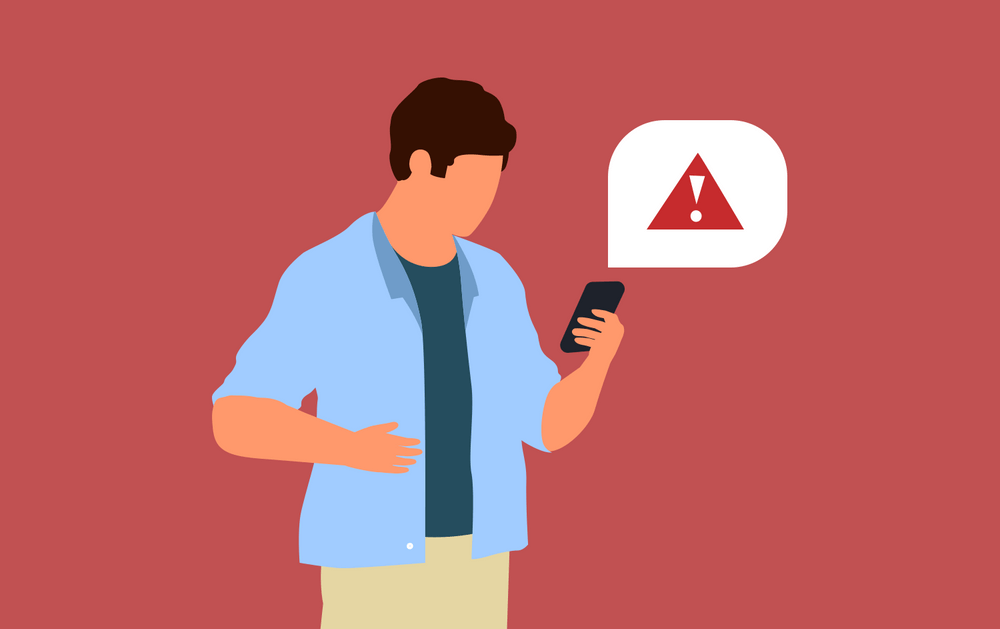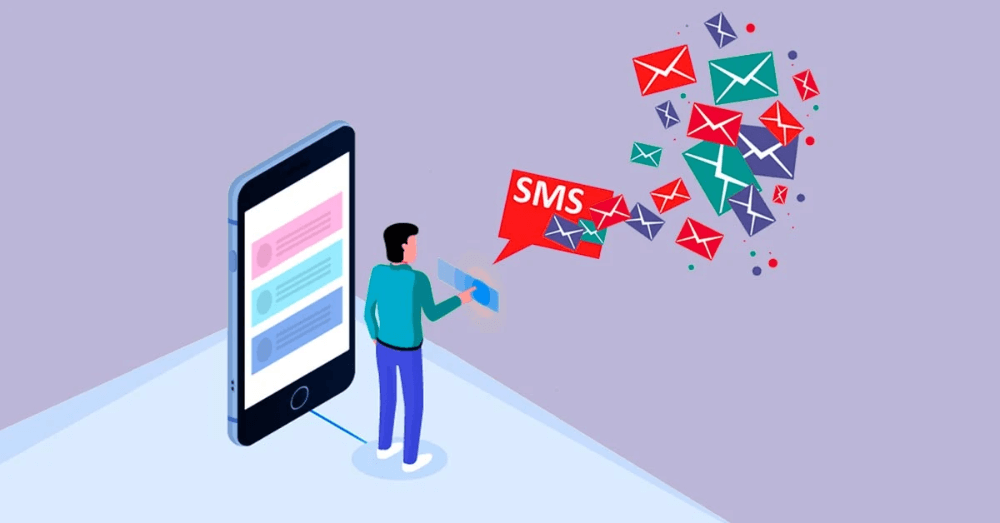📑Table of Contents:
- Why SMS Works in Emergencies
- SMS in Healthcare Emergencies
- SMS for Public Safety and Disaster Response
- SMS in Utility and Infrastructure Emergencies
- Crafting Effective Emergency SMS Messages
- Building Trust Through Crisis SMS
- The Role of Two-Way Messaging
- Reducing Risks with SMS
- Case Study: Local Government Response
- The Future of Crisis SMS
- Final Thoughts

When a crisis strikes, speed and clarity matter more than anything. Whether it’s a severe storm, a healthcare emergency, or a sudden utility outage, organizations must reach people quickly. In these moments, SMS stands out as one of the most reliable tools for communication. Unlike email or social media, which can be missed, text messages almost always get opened.
That speed can save lives, protect communities, and restore trust in critical situations. With most people carrying mobile phones, SMS offers the directness needed when emergencies unfold. Let’s explore how different sectors like healthcare, public safety, and utilities are using text messaging for crisis alerts and why it has become a trusted channel.
Why SMS Works in Emergencies
SMS has unique advantages when compared to other communication methods. Open rates for text messages reach nearly 98%, and most messages are read within minutes. That makes SMS far more reliable in urgent moments than emails, which can sit unopened for hours.
Another factor is simplicity. Text messages don’t rely on internet access or apps. As long as there’s cellular service, a message can reach the recipient. This gives SMS an edge in emergencies where power outages or network congestion can disrupt other channels.
Additionally, SMS delivers concise messages. During a crisis, people don’t want long explanations. They want quick instructions, updates, or reassurance. Text messaging delivers that clarity.
For marketers, these benefits are already familiar. Research into SMS trends and statistics shows how effective texts are at reaching audiences. But when applied to emergencies, the impact can be life-changing.
SMS in Healthcare Emergencies
Healthcare providers often face situations where rapid communication is vital. From sudden schedule changes to health warnings, SMS provides a direct line between organizations and patients.
For example, during a flu outbreak, a hospital can send updates about vaccination availability. If a doctor’s office closes due to an emergency, staff can instantly notify patients about rescheduled appointments. In large-scale events like pandemics, healthcare systems can push out reminders about testing locations or safety measures.
Beyond alerts, SMS also provides follow-up support. Patients can receive medication reminders or safety instructions after leaving the hospital. This combination of immediate alerts and long-term care strengthens trust in healthcare systems.
SMS for Public Safety and Disaster Response
When disasters strike, public safety organizations rely on mass communication. Hurricanes, wildfires, and severe weather events demand fast alerts. SMS provides a way to warn residents and guide them to safety.
For example, a local government might send evacuation instructions with directions to the nearest shelter. Emergency services may issue warnings about road closures or hazardous conditions. With text messages, critical details reach people instantly, even if they are away from television or radio.
One overlooked aspect is trust. Citizens expect clarity during crises. SMS offers a direct voice of authority. Unlike social media, where misinformation spreads quickly, official texts come from verified sources. That reliability reduces panic and encourages safer behavior.
Text messaging also supports ongoing communication after the initial alert. Updates about recovery efforts, supply distribution, and volunteer opportunities keep communities informed as situations evolve.
SMS in Utility and Infrastructure Emergencies
Utility companies also face urgent communication needs. Power outages, gas leaks, or water contamination require immediate alerts to customers. SMS ensures that people know what’s happening and how to respond.
For example, a power company can send a text saying: “Outage in your area. Estimated restoration time: 3 hours.” That transparency reduces customer frustration and prevents call center overload. If water supplies become unsafe, SMS can provide clear instructions on boiling water or alternative sources.
Utility crises can cause widespread confusion. Quick texts prevent panic and give residents actionable steps. This not only protects public safety but also preserves trust in service providers.
Crafting Effective Emergency SMS Messages
Writing for emergencies requires precision. Messages must be clear, actionable, and easy to understand. Here are best practices:
- Start with urgency. Use words like ALERT or WARNING to grab attention.
- Keep it short. Focus only on essential information.
- Give clear instructions. Tell people what to do next.
- Provide reassurance. If possible, include a timeline or point of contact.
For example:
“ALERT: Gas leak reported near Main St. Evacuate the area immediately. Emergency crews on site. Updates will follow.”
This message is direct, clear, and gives both instructions and reassurance.
Building Trust Through Crisis SMS
Trust is critical in emergencies. People need to believe the information they receive. That’s why organizations must manage SMS carefully. Sending false alerts or overwhelming people with non-urgent texts damages credibility.
Clear opt-ins also matter. Customers and citizens should know that signing up for texts includes emergency alerts. This avoids confusion and ensures high engagement.
Interestingly, lessons from SMS for customer service apply here too. Just as service messages improve satisfaction, timely alerts build trust. Both depend on clear, respectful, and helpful communication.
The Role of Two-Way Messaging
While one-way alerts are critical, two-way messaging has growing value in emergencies. Citizens can reply to confirm safety, request help, or share on-the-ground updates.
For instance, during a disaster, residents could text back their location if they need evacuation assistance. In healthcare, patients could confirm appointment changes via SMS. Two-way dialogue makes the system more interactive and responsive.
As AI and automation improve, conversational SMS will become even more important. Systems will be able to process thousands of incoming replies quickly and provide accurate responses in real time.
Reducing Risks with SMS
While SMS is powerful, organizations must also consider risks. False alarms can cause panic. Poorly timed alerts may overwhelm systems. That’s why training and careful planning are essential.
Additionally, safety campaigns can extend beyond crisis events. For instance, sharing texting and driving stats via SMS helps raise awareness about everyday risks. By using SMS for education as well as emergencies, organizations strengthen public safety year-round.
Case Study: Local Government Response
Consider a city government responding to a major storm. The city used SMS to send evacuation notices, shelter locations, and road closure updates. After the storm passed, officials used text messages to coordinate clean-up efforts and direct volunteers.
Surveys showed that 90% of residents who received texts felt more confident and prepared during the crisis. Many also reported higher trust in city leadership afterward. This example shows how SMS can turn a chaotic event into a managed response.
The Future of Crisis SMS
The future points toward even smarter emergency messaging. Integration with location-based services will allow hyper-targeted alerts. For example, only residents in a flood zone would receive a flood warning. AI could analyze conditions in real time and trigger automated alerts.
Rich Communication Services (RCS) may also enhance crisis messaging. Features like maps, clickable buttons, and quick replies could improve clarity and speed of response. However, simplicity will always remain the core strength of SMS.

Final Thoughts
In times of crisis, communication can mean the difference between chaos and safety. SMS offers speed, reliability, and clarity. Healthcare providers use it to share health alerts. Public safety agencies rely on it to warn citizens. Utility companies count on it to keep customers informed during outages.
By crafting concise, actionable texts and maintaining trust, organizations can ensure their messages make a real impact. As technology evolves, SMS will continue to stand strong as the backbone of emergency communication.
